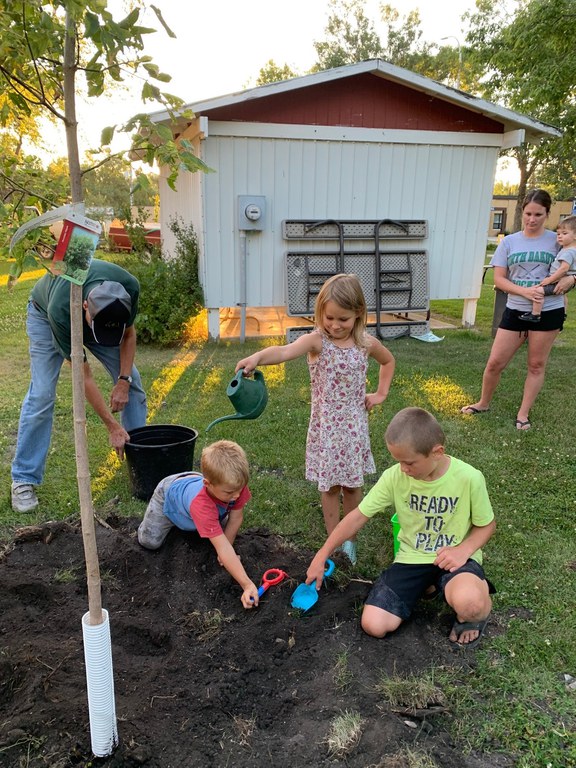Stewardship is for Everyone
Stewardship Week was celebrated last week. Did you miss it?
Sponsored by the NACD (National Association of Conservation Districts – which includes your local SCD) every year between the last Sunday in April and the first Sunday in May, Stewardship Week reminds us of our individual responsibilities to care for the natural resources upon which we all depend.
In North Dakota, those natural resources include the fertile soils that support and enable crops to grow and gardens to flourish, and the clean water that nourishes those plants. We are blessed with clean air. And, we enjoy the native vegetation, including trees. Forests. Forests? In North Dakota?
The theme for this year’s Stewardship Week is “Healthy Forests, Healthy Communities”. In our prairie state, we have native State Forests in the Turtle Mountains, the Pembina Gorge, and the Sheyenne River Valley. Native riparian & upland forests blanket the banks of our rivers. The 50,000 miles of shelterbelts or windbreaks stretched across the state are sometimes referred to, tongue-in-cheek, as linear forests. And then, we have community forests – those trees that beautify family homes, shade the streets and grace the parks of more than 350 communities in North Dakota, covering about 400,000 acres.
Trees help stabilize our soils, slow rainwater runoff (filtering the water in the process), and clean the air by removing particulate matter & absorbing gaseous pollutants. We enjoy energy savings by placing trees to shade buildings and to slow the harsh winter winds. Trees sequester CO2 and provide carbon storage. Following the initial investment of purchasing, planting and caring for a large-statured shade tree, a tree can provide the following returns over the course of twenty years**:
- Remove 3,100 pounds of carbon dioxide from the atmosphere
- Reduce the emissions of 5,500 pounds of carbon dioxide and 30 pounds of air pollution from a power plant
- Save 570 kWh of electricity and 20 MMBtu of fuel for cooling and heating
- Intercept 27,000 gallons of rainfall and avoid 4,800 gallons of runoff
- Filter 15 pounds of ozone, nitrogen dioxide and sulfur dioxide from the air we breathe
Recent tree-benefit research has focused on the effects of trees on human health. A study on children with attention deficit disorders discovered that the effect of a walk through a park is equal to peak effects of two typical ADHD medications. Visual exposure to settings with trees helps recovery from stress within five minutes, as indicated by changes in blood pressure and muscle tension. Green environment impacts worker productivity: in one study, workers without nature views from their desks claimed 23% more sick days than workers with views of nature.
Stewardship is all about taking care of those things that, really, take care of us: our precious soil, water and air. And trees. Make this world a little bit better by planting a tree.
**These ecosystem benefits (and more) can be quantified using a suite of software tools developed by the US Forest Service, collectively known as iTree and free to use. See: www.itreetools.org

May is Arbor Month in North Dakota. These youngsters enjoyed helping plant trees in McVille during the community’s 2020 Arbor Day.
Gerri Makay
Gerri.Makay@ndsu.edu
Community Forestry Manager


